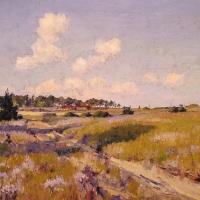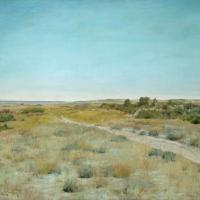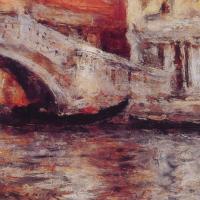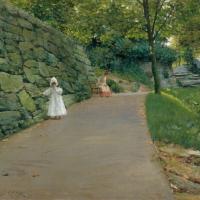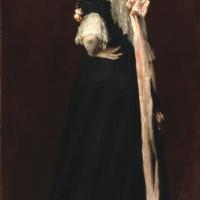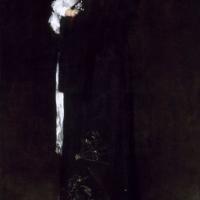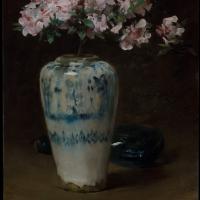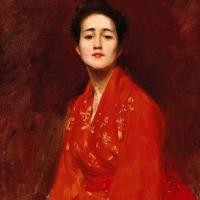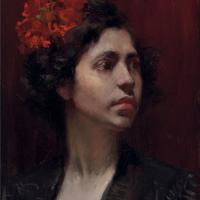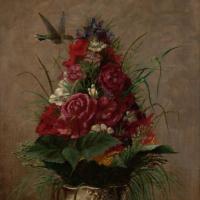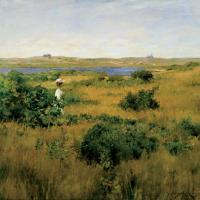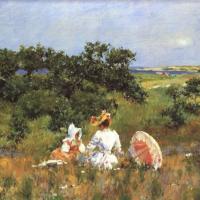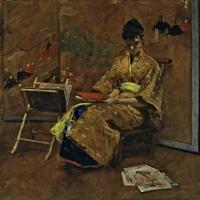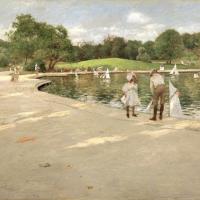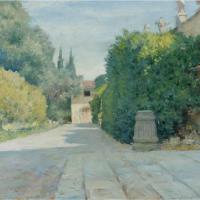William Merrit Chase
Afternoon Shadows
$450.00
First Touch Of Autumn
$450.00
Florence 1907
$450.00
Florence1907
$450.00
In The Park. A By-Path
$450.00
Lydia Field Emmet
$480.00
Mother_And_Child_
$480.00
Pink Azalea - Chinese Vase
$450.00
Ring Toss
$450.00
Shinnecock Hills Landscape
$450.00
Spanish Girl
$480.00
Still Life With Hummingbird
$450.00
Study Of A Young Woman
$480.00
Summer At Shinnecock Hills
$450.00
The Coast Of Holland
$450.00
The Fairy Tale
$450.00
View From Central Park
$450.00
Villa In Florence
$450.00
William Merrit Chase
William Merritt Chase was born on November 1, 1849, in Williamsburg (now Nineveh), Indiana, to the family of Sarah Swain and David H. Chase, a local businessman. Chase's father moved the family to Indianapolis in 1861, and employed his son as a salesman in the family business. Chase showed an early interest in art, and studied under local, self-taught artists Barton S. Hays and Jacob Cox.
After a brief stint in the Navy, Chase's teachers urged him to travel to New Yorkto further his artistic training. He arrived in New York in 1869, met and studied with Joseph Oriel Eaton for a short time, then enrolled in the National Academy of Design under Lemuel Wilmarth, a student of the famous French artist Jean-Léon Gérôme.
In 1870, declining family fortunes forced Chase to leave New York for St. Louis, Missouri, where his family was then based. While he worked to help support his family he became active in the St. Louis art community, winning prizes for his paintings at a local exhibition. He also exhibited his first painting at the National Academy in 1871. Chase's talent elicited the interest of wealthy St. Louis collectors who arranged for him to visit Europe for two years, in exchange for paintings and Chase's help in securing European art for their collections.
In Europe, Chase settled at the Academy of Fine Arts, Munich, a long-standing center of art training that was attracting increasing numbers of Americans and attracted Chase because it had fewer distractions than Paris. He studied under Alexander von Wagner and Karl von Piloty, and befriended American artists Walter Shirlaw, Frank Duveneck, and J(oseph) Frank Currier.
In Munich, Chase employed his rapidly burgeoning talent most often in figurative works that he painted in the loosely brushed style popular with his instructors. In January 1876 one of these figural works, a portrait titled "Keying Up" – The Court Jester (now in the collection of the Pennsylvania Academy of the Fine Arts) was exhibited at the Boston Art Club; later that year it was exhibited and won a medal at the Philadelphia Centennial Exposition, and this success gained Chase his first fame.
Chase worked in all media. He was most fluent in oil painting and pastel, but also created watercolor paintings and etchings.
He is perhaps best known for his portraits, and his sitters including some of the most important men and women of his time. In addition to painting portraits and full-length figurative works, Chase began painting landscapes in earnest in the late 1880s. His interest in landscape art may have been spawned by the landmark New York exhibit of French impressionist works from Parisian dealer Durand-Ruel in 1886. Chase is best remembered for two series of landscape subjects, both painted in an impressionist manner. Chase continued to paint still lifes throughout his career as he had done since his student days. Perhaps Chase's most famous still life subject was dead fish, which he liked to paint against dark backgrounds, limp on a plate as though fresh from a fishmonger's stall. He was known for purchasing the dead fish at the market, painting them quickly, and then returning them before they spoiled.
Chase won many honors at home and abroad, was a member of the National Academy of Design, New York, and from 1885 to 1895 was president of the Society of American Artists. He became a member of the Ten American Painters after John Henry Twachtman died.
Chase died on October 25, 1916, at his home in New York City, an esteemed elder of the American art world. He was interred in Green-Wood Cemetery, Brooklyn, New York.
Today his works are in most major museums in the United States. His home and studio at Shinnecock Hills, New York, was added to the National Register of Historic Places in 1983 as the William Merritt Chase Homestead.


